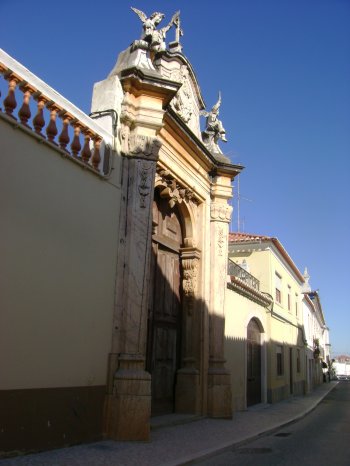Explore the best places
Heritage in Portugal
Stupa Tashi Gomang
- heritage
EN253 - Centro de Retiros Herdade Corte Pereiro
7580-706, Alcácer do Sal
Templo da comunidade budista Guhya Mantrika, o Stupa Tashi Gomang está situado no Centro de Retiros de Santa Susana, em Alcácer do Sal. É um dos maiores templos budistas do mundo ocidental, com 16 metros de altura e um templo interior de 36 metros quadrados, preparado para a prática de rituais, cerimónias e palestras. Entre os materiais utilizados na sua construção, destaque para as mármores alentejanas. Já a decoração, nomeadamente as estátuas, são originárias do Tibete e do Nepal.
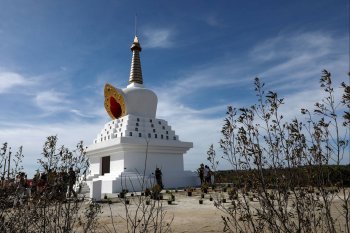
Cripta Arqueológica do Castelo de Alcácer do Sal
- heritage
Rua do Convento de Aracoelli, 12
7580-131, Alcácer do Sal
Regarded as the largest archaeological crypt in the country, lies beneath the Castle of Alcácer salt, transformed into the Pousada d. Afonso II. Shows traces of iron age dating back to the 6th century BC, as well as structures of the Roman period and the Islamic occupation, covering a considerable area. Met also medieval Christian-era walls pós-reconquista, based partly on Roman walls which, in turn, overlap the preexisting structures, dating from the iron age.
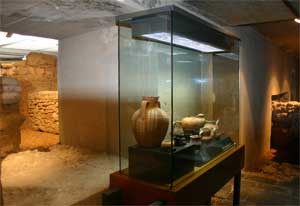
Museu Municipal Pedro Nunes
- heritage
Rua do Município - Praça Pedro Nunes
7580, Alcácer do Sal
Founded in the end of the last century, this museum features archaeology collections of the Alcácer do Sal parish, from pre-history to our days. A special not to the iron age and roman age objects.
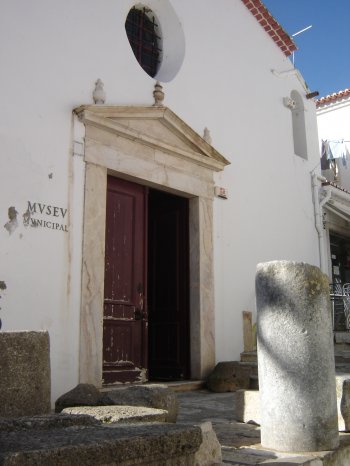
Ermida de São Gregório
- heritage
Aldeia de São Gregório
7150-390, Rio de Moinhos
Chapel with a very simple façade, white and blue trim. Integrated in the village of São Gregório, this construction already existed in the 16th century, and it is thought that it was founded by a shoemaker who had left some houses that would serve as income for the chapel.
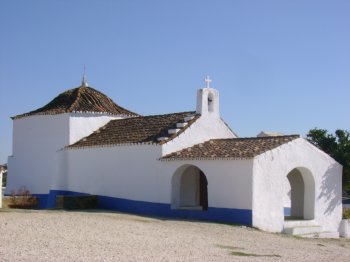
Museu Etnográfico do Torrão
- heritage
Rua das Torres
7595-124, Torrão
An ancient olive oil press, recovered with traditional techniques and materials, that is currently a museum. Devoted to all the different stages of bread making.

Igreja de Santa Maria do Castelo / Igreja Matriz de Alcácer do Sal
- heritage
Rua da Matriz
7580-197, Alcácer do Sal
This temple was founded by the religious Order of Santiago at the end of the 12th century. A romanesque-gothic church with three naves. A special note to the portals and to the chapiters decorated by animal images.

Passo da Via Sacra da Rua Terreiro das Servas
- heritage
Rua Terreiro das Servas
7150-164, Borba
"Passo" built in white marble, like the three that make up this set. It is perhaps one of the most opulent and largest. The work was designed by the architect José Francisco de Abreu.

Estação Arqueológica do Senhor dos Mártires
- heritage
Rua Matriz
7580, Alcácer do Sal
The site is buried under olive trees. It is classed as a National Monument. In this site, four different types of graves have been found, all of which related to crematory rituals.

Castelo de Alcácer do Sal
- heritage
Rua do Castelo
7580-197, Alcácer do Sal
A moorish castle that was built during the 6th century. Conquered by the Portuguese crown in 1217, it ceased being used for military purposes in the 15th century. In the 16th century, the Order of Aracoelli founded a convent there, where they remained until 1834. Currently, one can visit the ruins of the catle, of the Aracoelli convent, of the church of Saint Mary that dates back to the 13th century and vestiges of several houses.
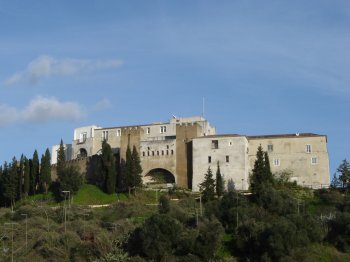
Passo da Rua de Évora
- heritage
Rua de Évora
7150-133, Borba
Work by the architect Francisco José de Abreu, it is part of the set of Passos in this region, which are among the largest in the country. The jambs are decorated with volutes of vegetal elements. The vault and walls covered in murals.
